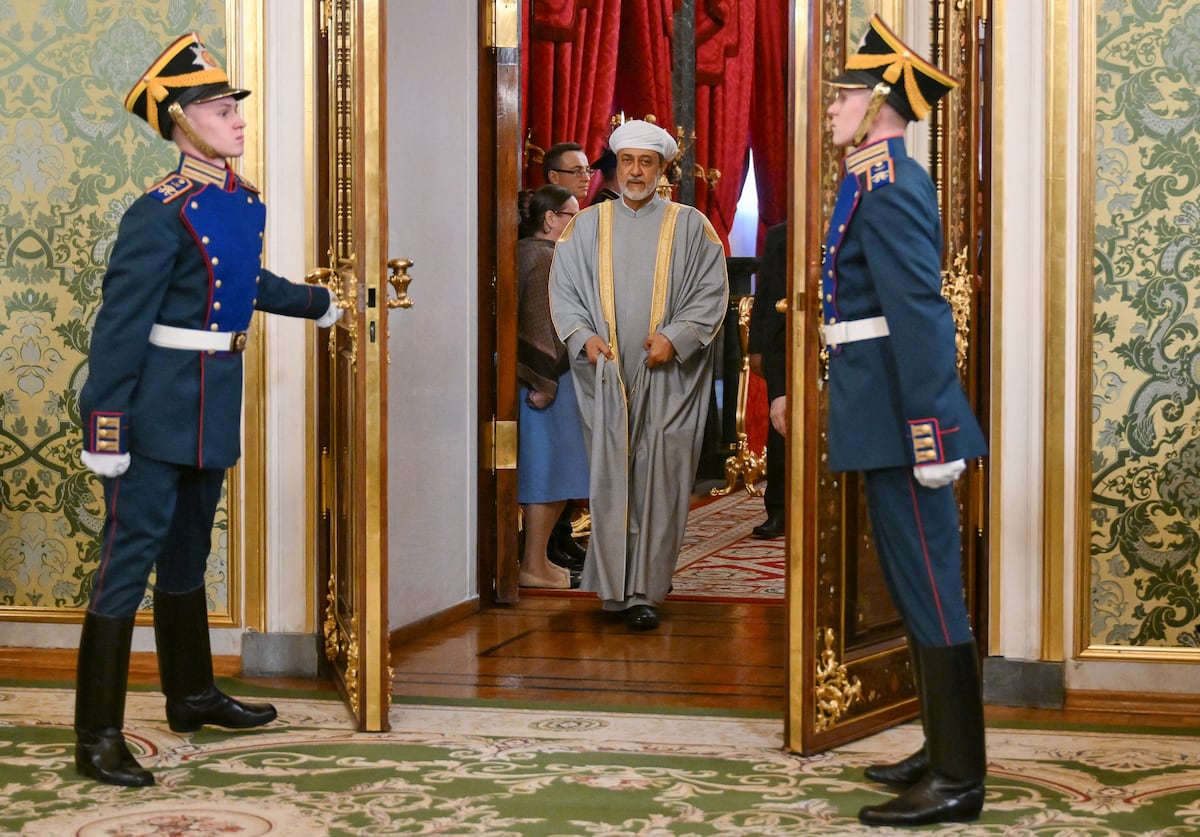Pentagon leaders have spent the week drawing up lists of civilian employees, as directed by Defense Secretary Pete Hegseth, in preparation for the kinds of mass firings that have recently slashed thousands of workers at other federal agencies. Multiple employees informed of the plans said the dismissals were to begin as early as today, Government Executive’s Eric Katz and Meghann Myers of Defense One report.
But now the plan is on hold until a legally required review is conducted to determine their likely effect on the U.S. military’s readiness, CNN’s Natasha Bertrand reported Friday.
On Thursday, Hegseth issued the first public confirmation that firings were in the works. In a video posted to social media about 5:30 p.m. ET, Defense Secretary Pete Hegseth said the Defense Department was carrying out a “reevaluation of our probationary workforce” in compliance with the Office of Personnel Management’s Jan. 20 directive to reduce federal workers across U.S. government agencies.
Hegseth said the firings would start with “poor performers amongst our probationary employees,” then a hiring freeze would be imposed to “take more time to identify, on a performance-based standard, who we’re going to hire, and reward hardworking employees who are central to the core warfighting mission…The best and brightest are going to stay. Those who are underperformers won’t,” he said in his video.
The SecDef gave no timeframe for these moves. He also did not say how they might comport with laws that give hiring preference to veterans and offer broad protections to career federal employees.
And by Friday, his office had reportedly put the whole plan on hold because they hadn’t checked whether it was legal. “DoD has temporarily paused a plan to carry out mass firings of civilian probationary employees until SecDef Hegseth and the Pentagon’s Office of General Counsel can carry out a more thorough review of the impacts such firings could have on US military readiness,” reported CNN’s Bertrand, citing “two defense officials familiar with the matter.”
Mass firings “could run afoul of Title 10 section 129a of the U.S. Code,” which says that the defense secretary “may not reduce the civilian workforce programmed full-time equivalent levels unless the Secretary conducts an appropriate analysis” of how those firings could affect U.S. military lethality and readiness, CNN reported on Wednesday. The law also forbids cost considerations to subordinate such concerns. A senior defense official had confirmed that no such analysis had been conducted.
Developing: Joint Chiefs Chairman Brown and Navy chief Franchetti could be among the first generals Trump fires, ABC News reported Thursday.
Also: The Navy just fired its commander of the USS Harry Truman after the carrier collided with a merchant ship off the coast of Egypt last week. U.S. Naval Institute News has more, here.
Welcome to this Friday edition of The D Brief, a newsletter dedicated to developments affecting the future of U.S. national security, brought to you by Ben Watson and Bradley Peniston. Share your tips and feedback here. And if you’re not already subscribed, you can do that here. On this day in 2022, Russian leader Vladimir Putin claimed Ukraine’s eastern Donetsk and Luhansk regions declared their independence and were ready to be absorbed into Russia. Putin’s full-scale invasion of Ukraine began just three days later.
Around the Pentagon
Pentagon acquisition-policy shift may break up tech offices. “We are going to create an organization that is the commercial-engineering version of DARPA,” using portions of the Strategic Capabilities Office, the Defense Innovation Unit, and the Chief Digital and Artificial Intelligence Office, a senior defense official told Defense One on condition of anonymity.
The new entity will put the acquisition costs mostly on the services, the official said: “It’s gonna use PEO [program executive office] money, period.”
That change is part of a broader philosophical shift that will see the Pentagon spend less on research and what the official described as “abstractions,” and more on usable arms and gear.
“This administration cares about weapon systems and business systems and not ‘technologies,’” the official said. “We’re not going to be investing in ‘artificial intelligence’ because I don’t know what that means. We’re going to invest in autonomous killer robots.”
Other changes in the plan, which officials stressed is still under development, include shifting more R&D costs to industry and moving control of some programs from the services to the military. Defense One’s Patrick Tucker has more, here.
Developing: A new Pentagon memo tells acquisition agencies to review which consulting contracts should be terminated and to start with contracts let under the GSA vehicle. The memo (PDF) was signed on Tuesday by Steven Morani, performing the duties of the Under Secretary of Defense for Acquisition and Sustainment.
Related reading:
Boeing is working with Elon Musk to speed up the delivery of new Air Force One jets after President Trump expressed ire over the delays of the highly specialized aircraft, Defense One’s Audrey Decker reported Thursday. “Elon Musk is actually helping us a lot in working through the requirements on VC-25 to try to help us get the things that are non-value added constraints out of the way so that we can move faster and get the president those airplanes delivered. He’s a brilliant guy, so he’s able to pretty quickly ascertain the difference between technical requirements and things that we can move out of the way,” Boeing CEO Kelly Ortberg said Thursday during a Barclays conference.
The jets’ delivery, originally set for 2024, has been pushed toward the end of Trump’s term, possibly in 2028. “I’m all in on trying to pull these airplanes up and get the president the airplanes delivered to him, which is what he wants,” Ortberg said. Read more, here.
ICYMI: Musk suggested the U.S. should carry out drone strikes inside Mexico following this week’s announcement from the State Department that the Trump administration declared several drug cartels as terrorist organizations.
Worth noting: “Direct U.S. military action against groups on Mexican soil could be interpreted as an act of war,” The Hill reported Wednesday after Musk’s social media post.
Mexico’s president warned in response, “This cannot be an opportunity for the U.S. to invade our sovereignty. With Mexico, it is collaboration and coordination, never subordination or interventionism, and even less invasion,” President Claudia Sheinbaum told reporters Thursday. “The Mexican people will under no circumstances accept interventions, intrusions or any other action from abroad that is detrimental to the integrity, independence or sovereignty of the nation,” she said.
Sheinbaum has approved U.S. drone surveillance flights over Mexico; but not lethal actions like the drone strikes Musk is encouraging. The Hill has a bit more.
Trump 2.0
American and Russian officials have been discussing Ukraine via an unofficial “side channel” in Switzerland, Reuters reported Thursday. “While the attendees have diplomatic and security experience, they are not government officials and it was not immediately clear if any were sent by their governments,” the wire service writes, noting, “Many other details remain unclear, including whether Ukrainians were present, when the encounters began and what the meetings’ agendas covered.”
During official talks earlier this week in Saudi Arabia, Russia requested the U.S. withdraw NATO forces from eastern Europe, Romanian officials told the Financial Times. “The U.S. delegation reportedly rejected the demand, but concerns remain over what concessions President Donald Trump might consider to secure a deal with Russia,” the Kyiv Independent reports.
A former Pentagon official is especially disturbed by Trump’s parroting of Russian talking points after he falsely accused Ukraine of invading its own country with Russian troops three years ago.
“Trump’s openly siding with an accused war criminal constitutes the greatest repudiation of Western values and collective security arrangements by any American president since World War II and the history of the Republic,” warns Joseph Bosco, former China director at the Pentagon under POTUS43, writing for The Hill on Friday. “Perhaps instead of being placed next to Washington, Jefferson, Lincoln and Teddy Roosevelt on Mount Rushmore, a Russian mountain will feature the carved images of Lenin, Stalin, Putin and Trump,” he suggested.
Developing: Sweden discovered a new broken undersea cable. The New York Times has more.
And back stateside, the Senate confirmed Kash Patel to lead FBI in a 51-49 vote Thursday. Nextgov’s David DiMolfetta has more.
Additional reading:
Etc.
Happening this afternoon in DC: The Defense Priorities think tank is hosting a discussion on the future of Syria featuring former Pentagon official Dana Stroul beginning at 2 p.m. ET. Here’s how DP sets up the event: More than a decade since former president Barack Obama announced Bashar al-Assad “must go,” a new government rules in Syria. At its center is Hayat Tahrir al-Sham (HTS), a group formerly tied to al-Qaeda. The new Trump administration must quickly decide how to deal with HTS and whether to pull out U.S. troops now that the major rationales for keeping them there—combatting ISIS, overthrowing Assad, and forcing Iran’s exit—have evaporated. How will the fall of the Assad regime impact the Middle East? What impact does this change have on U.S. interest in the region? Join our distinguished panel of experts to explore these questions and more. Details and registration here.
For your weekend: Stay tuned later today for our latest episode of the Defense One Radio podcast, featuring U.S. Army Col. Joshua Glonek, commander of the 3rd Brigade Combat Team, 10th Mountain Division. His soldiers recently wrapped a nine-month rotation in eastern Europe testing out the Army’s new fighting strategy, Transformation in Contact. Glonek shared several lessons learned from that experience in conversation with Defense One’s Patrick Tucker and Ben Watson.
We’ll also be listening to the newest podcast from Georgetown University historian Thomas Zimmer and political scientist Lily Mason of Johns Hopkins University. They discussed last week’s Foreign Affairs essay from political scientists Steven Levitsky and Lucan Way entitled, “The Path to American Authoritarianism: What Comes After Democratic Breakdown.”
And a few books we’re excited about as we finish reading include 2023’s “The Gutenberg Parenthesis: The Age of Print and Its Lessons for the Age of the Internet,” from Jeff Jarvis of the City University of New York’s Craig Newmark Graduate School of Journalism, as well as Robert Caro’s Pulitzer Prize-winning 1974 biography of New York urban planner Robert Moses entitled, “The Power Broker.” (There’s also a recent podcast series about the book from the same folks who produce the design podcast “99% Invisible.”) And our science and tech editor Patrick Tucker recommends “The End of Reality: How Four Billionaires are Selling a Fantasy Future of the Metaverse, Mars, and Crypto,” published in 2023 by Jonathan Taplin of the University of Southern California.
Do you have recommendations you’d like to share with us? Send us an email and let us know.
Read the full article here








Leave a Reply